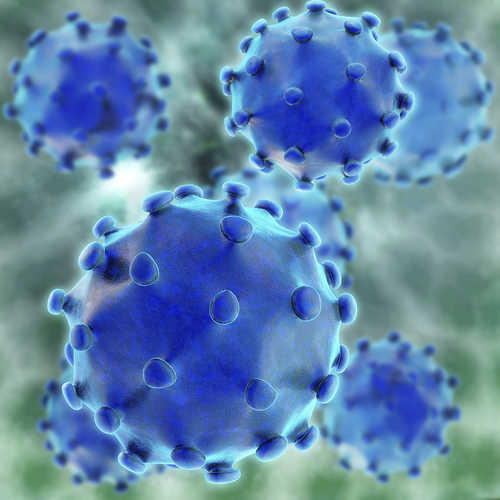Click here for the next report.
San Francisco—With a number of effective therapies for hepatitis (HCV) already producing cure rates approaching 99%, the recent 2015 annual meeting of the American Academy for the Study of Liver Disease (AASLD) featured a surprising number of phase 3 trials for additional treatments—so many, in fact, that not all could be scheduled as presentations.
Many of the new therapies have demonstrated similar efficacy to those already on the market, but they target specific subgroups of HCV patients. “An example might be genotype 3 patients who might be just a degree less successful than some of their other genotype counterparts” and patients with impaired renal function who cannot safely take the drugs that are already approved, said Raymond T. Chung, MD, co-chair of the revised HCV Guidance in an interview on AASLD TV.
The meeting—and revisions to HCV guidelines—highlight the “introduction of new regimens that work for distinct populations and enhance the efficacy rates in yet other populations of patients,” Dr. Chung noted.
Revolutionary Success against Hepatitis C and Comorbidities
Many presenters reported highly effective treatments for patients with subgroup infections of HCV, including those with genotype 3 infections, decompensated liver disease, cirrhosis, and those for whom previous treatment with direct-acting antivirals (DAAs) has failed:
- A European study found that 92% of patients with HCV genotype 3 attained sustained virologic response at 12 weeks (SVR12) following treatment on a regimen of daclatasvir and sofosbuvir with or without ribavirin. The combination received Food and Drug Administration approval in July to treat patients with genotype 3 HCV infections.
- Among HCV patients with genotype 1, 2, 3, 4 and 6 infections, and those with decompensated liver disease, 94% achieved SVR12 after treatment on a 12-week regimen of a fixed dose of velpatasvir and sofosbuvir with ribavirin.
- The ALLY-3+ study found that 16 weeks of daclatasvir and sofosbuvir plus ribavirin produced an sustained virologic response rate at 4 weeks post treatment of 94% in patients with compensated advanced fibrosis. Administration of the combination resulted in a 100% sustained virologic response rate at 4 weeks (SVR4) after treatment duration of either 12 or 16 weeks in those with cirrhosis.
- In a study of 22 patients for whom previous treatment had failed, all of the patients attained SVR12 with regimens that combined ombitasvir/paritaprevir/ritonavir, and dasabuvir, plus sofosbuvir for 12 weeks or the 5-drug combination plus ribavirin for 12 weeks for those with genotype 1a infections and the 5-drug combo plus ribavirin for 24 weeks for those with 1a infections and cirrhosis.
- A 12-week regimen of elbasvir/grazoprevir and sofosbuvir plus ribavirin produced SVR4 after treatment in 100% of patients for whom previous treatment with the combination without ribavirin had failed.

Direct-Acting Antivirals
It has been about 2 years since the first approvals of DAAs, both clinical trials and real world practice have shown that HCV can be cured in individuals and largely eliminated in the population, with widespread treatment. “It is a remarkable success story for medical science,” noted the AASLD in a press release.
And, one that occurred very quickly. “The cure of hepatitis C just 16 years after its identification is a credit to the field of hepatology,” said Gyongyi Szabo, MD, PhD, FAASLD, 2015 president of the AASLD in her President’s Address Monday evening.
Taking the promise of a cure to the point of making HCV a rare disease will require a significant investment, but one that will pay off quite quickly, according to a pair of studies by Jagpreet Chhatwal, PhD.
Assuming that the number of noninstitutionalized individuals with HCV in the U.S. drops from 2 million today to 1 million by 2020 as a result of treatment with DAAs, the burden of HCV would remain high. “Under current management practices, 300,000 will die from HCV in the next 3 decades. This seems very high when we essentially have a cure for a disease,” Dr. Chhatwal said in an interview.
Before DAAs, the nation’s annual cost of HCV care approached $7 million per year. In 2015, it reached $21 billion and with HCV therapies driving almost 80% of that cost. According to Dr. Chhatwal, costs will drop sharply in the coming years, to below $2 billion by 2020 and to just $14 million by 2030. He estimated that it would cost $106 billion to make HCV a rare disease by 2040, an amount less than the U.S. spent on HIV/AIDS in the past 5 years alone.
In addition to the economic argument for expanded treatment, the AASLD has revised its guidelines to remove prioritization for HCV treatment for patients with advanced liver disease, instead recommending treatment for all infected individuals. The AASLD went one step further during the meeting and called on public and private insurers to treat all patients with HCV, and to implement this policy as the current of standard of care.
“We recommend early treatment of chronic HCV infection before the development of severe liver disease and other complications to improve overall survival rates,” the AASLD noted. “HCV treatment that leads to a cure is the only evidence-based intervention to prevent liver-disease progression.”
